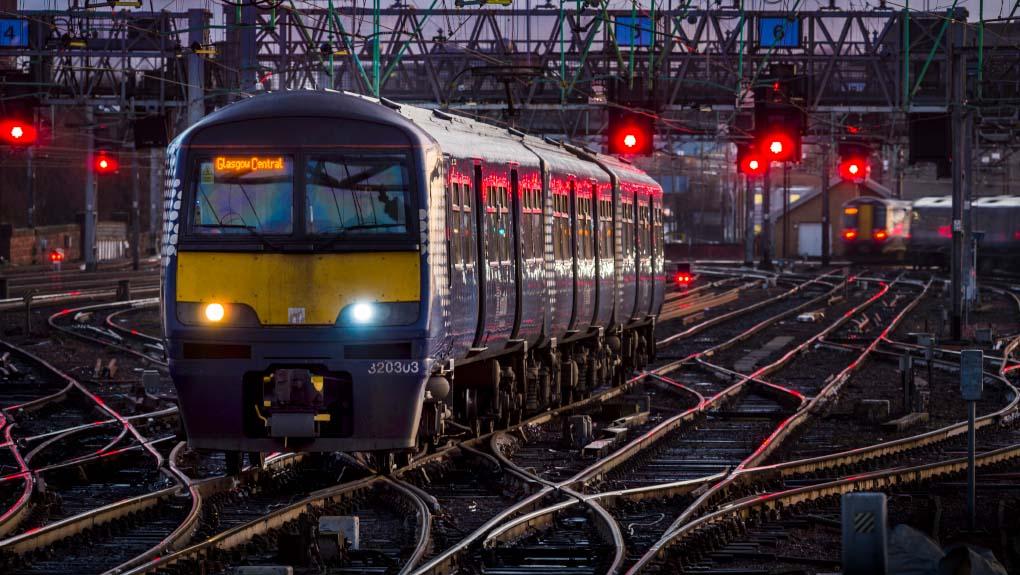
Since Network Rail Scotland’s interim plan in February and the ORR’s draft determination in June, Network Rail has revised its plans, responding positively to ORR’s challenge in a number of areas, including on performance and also on increasing spending on asset sustainability.
ORR's decisions are set out in its final determination. The key points are:
Train performance
ORR’s final determination reiterates the need for Network Rail Scotland to work with ScotRail and other operators to ensure that trains run punctually, with fewer cancellations, even as passenger numbers increase.
Network Rail Scotland has an objective, set by Scottish Ministers, to contribute to ScotRail’s target of 92.5% trains arriving at their end destination within five minutes of their scheduled arrival time. Delivering this target will be challenging and will require Network Rail to work closely with ScotRail. ORR will hold Network Rail to account for its contribution to this target.
ORR has included a Scotland targeted performance fund of £50mn to further support performance improvement.
Freight growth
Network Rail Scotland will be required to reduce freight cancellations from current levels. The regulator is also continuing to cap track access charges for freight operators below cost.
Renewing the railway
In its draft determination, ORR challenged Network Rail Scotland to increase its planned spending on core assets and welcomes that its updated plan includes an additional £44mn for structures in Scotland.
ORR considers that Network Rail Scotland has a suitable framework to understand and manage the change in risk from carrying out fewer renewals and a move to greater maintenance of existing assets.
Delivering value for money
ORR considers Network Rail Scotland’s proposed efficiency target of £410mn will be challenging. This will be a key area in ORR’s monitoring and holding to account of Network Rail Scotland in CP7.
Managing risks effectively
Significant uncertainty has shaped the development of Network Rail’s plans and our review of them. Inflation has increased financial challenges and climate change presents further uncertainty. Network Rail Scotland may also be exposed to financial risk because of its stretching efficiency target. Effective risk management will therefore be important as will risk funding.
ORR requires Network Rail Scotland to maintain sufficient and well managed levels of risk funding. We conclude that it should retain provisions for risk funding of £225mn.
Protecting the environment
To support the move towards a low emissions railway, ORR will hold Network Rail to account for delivering a more than 20% reduction in its carbon emissions. ORR has also set a target for Network Rail’s efforts to conserve and enhance biodiversity.
Will Godfrey, ORR’s Director, Economics, Finance and Markets, said:
Notes to editors
The 2023 periodic review (PR23) determines what Network Rail is expected to deliver with respect to its operation, support, maintenance and renewal (OSMR) of the network during CP7 (April 2024 to 2029) and how the available funding should be used to support this. Network Rail receives the majority of its funding from the UK and Scottish Governments. In addition to making available separate funding, each government also sets out a High Level Output Specification (HLOS) detailing what it expects Network Rail to deliver using the funding available. The remainder of Network Rail’s income comes from charges to passenger and freight operators and commercial income such as from property.
2. ORR also confirmed today that it will retain broadly the same structure of charges and incentives for passenger and freight operators as now. Specifically:
- Variable charges for passenger operators will remain cost-reflective in CP7.
- Variable charges for freight and charter operators will continue to be capped below cost for this control period.
- Infrastructure cost charges for freight operators will stay the same or reduce (in inflation adjusted terms).
- Open access operators will pay charges that recover some of the fixed network costs, where the demand is sufficiently strong that the operator is able to pay. These charges will remain at current levels (adjusted only for inflation).
- Infrastructure cost charges for freight operators will stay the same or reduce (in inflation adjusted terms)
- ORR will allow for contractual incentives between Network Rail and train operators, which are designed to limit disruption, to be updated within the control period.
ORR will now implement these changes by amending operators’ track and station access contracts.
3. ORR’s draft determination was based on an ‘interim’ plan prepared by Network Rail Scotland due to the short time it had to finalise its plans between the publication of Scottish Ministers’ High Level Output Specification (HLOS) and Statement of Funds Available (SoFA). In July Network Rail Scotland published a 'final' Strategic Business Plan. ORR’s final determination is based on Network Rail Scotland’s response to the draft determination.

